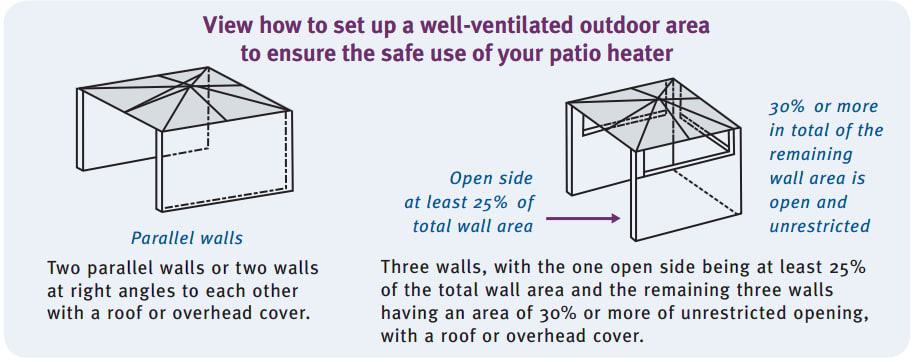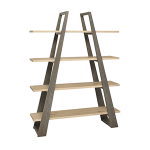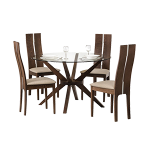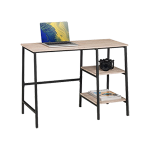Living safely with Gas patio heaters

This guide contains IMPORTANT SAFETY information and advice for users of gas patio heaters including those in the hospitality industry.
What is an outdoor gas patio heater?
It is an appliance for generating radiant heat, for outdoor use only, to keep people warm. It is fuelled by Liquefied Petroleum Gas (LPG) and can be dangerous if improperly used, placed or adjusted. It is essential to know the important safety rules about these heaters’ operation. This type of heater is for outdoor use only and has the potential to cause a fire and serious injury if it is used indoors or if it is unsafely set up or positioned. The products of combustion, produced during the operation of the appliance, may create a dangerous environment indoors.
Patio heaters safety rules
• Patio heaters are for outdoor use in well-ventilated areas only and must not be used indoors under any circumstances.
• Do not use during high winds – wind can blow out the flame and tip over the patio heater, both of which could be dangerous.
• Children should not operate patio heaters or be left unattended near one.
• Ensure you know how to turn the patio heater OFF before you turn it ON.
Getting started
• Read the manufacturer’s instructions before operating the patio heater.
• Ensure all panels, covers and guards are correctly fitted before use.
• Ensure the heat reflector is securely in place above the emitter head before use.
• Ensure the patio heater’s position is absolutely upright to minimise the risk of it falling over.
• Ensure the patio heater is stable and on a firm, level surface, capable of bearing its weight.
• Ensure the outdoor area is well-ventilated with proper airflow.
• Ensure there is a minimum of 1 metre clearance all round the patio heater.
• Never carry or pull the patio heater by its supply hose.
• Place the patio heater away from anything that might burn, such as gazebos, trees and trellises.
• Watch your footing; make sure the floor area is cleaned around the patio heater and is kept clear of trip-hazards.
While in use
• Do not MOVE the patio heater when it is alight.
• If a gas leak develops, turn the patio heater off at the valve if there is no source of ignition such as a spark or flame. If there is a source of ignition, clear the area and call emergency services.
• Ensure the patio heater is positioned somewhere where there is no risk of contact or fire from nearby objects, hanging materials, or anything else.
• Ensure the patio heater is located away from flammable materials, or materials that may shatter or explode due to heat, i.e. glass.
• Ensure there is enough clearance of combustibles (wood, pressed paper, plant fibres, plastics, plexi-glass, butane lighters, or any other solid or liquid that can ignite) around and under the emitter head of your patio heater.
• Position patio heaters so that they are in a shielded area and will not blow out.
• Do not hang anything including clothes, towels, or any other flammable material on or near the unit.
• Keep people aware of the heat output and the high surface temperatures of the unit.
• Children and infirm people should be under constant supervision around patio heaters.
Finishing off
• Wait for the burner to go out.
• Always allow the equipment to cool before moving or cleaning it.
• Turn the gas off at the cylinder when the appliance is not in use.
Storage, maintenance and equipment care
• Check hoses for wear periodically and have them replaced by a licensed gas worker or an authorised service agent when worn or damaged.
• Check hose and cylinder connection joints periodically for leaks with soapy water (leaks will cause bubbles to appear) and have them serviced if leaks appear.
• Keep the equipment clean.
• Ensure nothing is obstructing air holes or vents for proper combustion by periodically checking for blockages (debris or spider webs can clog up these air ducts and create a dangerous condition).
• When you are not using your patio heater, it should be covered and stored away out of the elements.
• Store the patio heater and spare gas cylinders outdoors and in an upright position.
• Store somewhere clean, dry and safe. • Store large patio heaters in a sheltered place when not in use, to prevent damage in high winds.
• Always have outdoor patio heaters serviced by a licensed gas worker or authorised service agent in accordance with the manufacturer’s instructions and especially after a long period of storage.
• Ensure chemicals or flammable materials are not stored near the appliance.
• Do not use a malfunctioning appliance until it is repaired by an authorised person.
• Only use gas equipment for its intended purpose.
• The gas cylinders used for these heaters are normally 9 kg. There are limits on the amount of LPG that can be stored indoors but preferably LPG cylinders should be stored securely outdoors, under cover.
What is a well-ventilated outdoor area?
A well-ventilated outdoor area is:
• an open-air situation that is not obstructed by buildings, structures etc, allowing for correct combustion and products of combustion to be readily dispersed into the air; or
• an alfresco area, veranda or balcony (large area) in open-air with natural ventilation that ensures stagnant areas of air do not form (as these prevent the products of combustion from being rapidly dispersed by wind and natural convection); or
• four open sides with a roof or overhead cover; or
• four enclosed sides (walls) without a roof or overhead cover. In the unlikely event of a gas leak occurring, a well-ventilated area will allow escaping gas to disperse.










Leave a comment